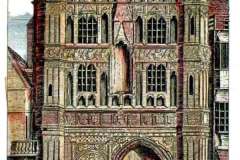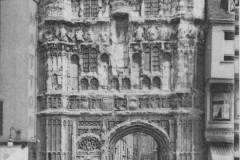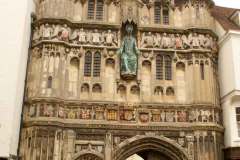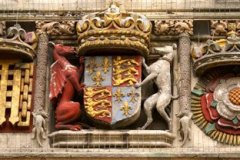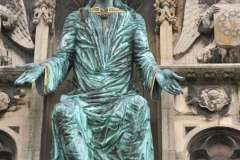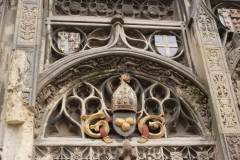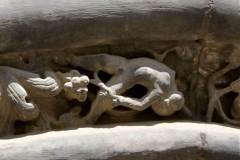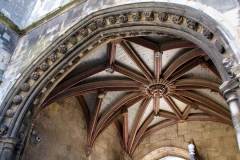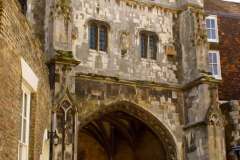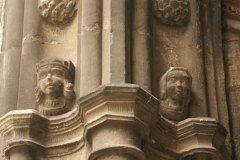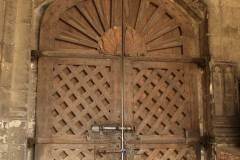Buttermarket
Introduction
This gate is the principal entrance to the cathedral, from whose dedication to Christ it takes its name, and forms the dramatic highlight of the Buttermarket over which it stands.
In terms of architecture it has proved difficult to fit Christ Church Gate into any particular style categories. The vertical panels, pilaster and capitals on the front of the gate arguably represent the first signs of Renaissance architecture in England.
History
Cathedral records,indicate the gate was built between 1504 and 1521 with funds provided by Priors Goldstone and Goldwell. This is despite the inscription of 1507 on the stonework “Hoc Opus constructum est anno Domini millesimo Quingentesimo decimo septimo,” – a matter of ongoing dispute between historians. It was probably built in honour of Prince Arthur, Henry VIII’s elder brother who married to Catherine of Aragon in 1501. He died the following year aged just 16, allowing Henry VIII to become King and marry Katherine himself in 1509. Imagine the consternation of the sculptors responsible for the heraldry trying to keep up with changing family dynamics! The original statue of Christ and the wooden gates were destroyed by the Puritan iconoclast Richard Culmer in 1643. The gates were restored by Archbishop Juxon in 1660 and still bear his arms. The original towers (Image 1) were torn down in 1803 (Image 2) by Jesse White, the surveyor to Cathedral, at the request of Alderman James Simmons. He wanted to see the Cathedral clock from his bank Simmons & Gipps, now the Lloyds Bank building on the High Street! The towers were replaced in 1937 during another restoration, this one funded by Dame Janet Stancomb-Wills (of the Wills tobacco family) and her sister. The statue of Christ was replaced in 1990 after a gap of 347 years.
What to see (when scaffolding is removed)
- The gate today constructed with a stone four centred arch and two stone faced brick stories above, surmounted by two octagonal towers , all decorated with blind perpendicular tracery (Image 3).
- Arms of Tudor Dynasty including (centre) the royal arms supported by the Welsh Dragon and the white greyhound of Henry VII’s father Edmund Tudor, (left) the Prince of Wales outside the Beaufort portcullis and (right) Spanish history in the arms of Catherine of Aragon (red and yellow of Aragon, castle of Castille, lions of Laon, eagles of Sicily and the pomegranate of Grenada) outside the Tudor rose (Image 4).
- A 1990 bronze sculpture of Christ by Klaus Ringwald of Schonach, Germany, with the coat of arms of the Wills family above the left shoulder (Image 5).
- Very early renaissance pilaster and capitals, dating amongst the earliest in the country (Image 6).
- A hermaphrodite, difficult to spot and possibly a mason having some fun! (Image7).
- Within the gate the bosses of the stone vault include that of Prior Goldwell and the Archbishop of York (Image 8).
- The rear of the gate (Image 9) including two small statues, possibly Prince Arthur and Catherine of Aragon (Image 10).
- A scallop shell, symbol of baptism and pilgrimage, has been used to create the wooden frame over the interior of the gate (Image 11).
Access: The front of the gate can be viewed at all times, the rear between 0900-1600 by entrance fee to the cathedral or free between 1700-2100 (when entrance to the whole of the precincts is free).
Sources: Everitt (1966); Woodman (1981); Sparks (2007); Canterbury Cathedral Chronicle No. 85; Ingram Hill (1986); Willment (1827)
SR

